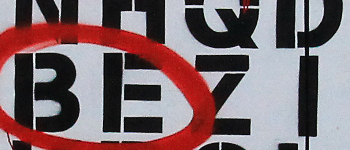Another week, another round up. We have the usual helpful craft links this week, as well as some inevitable sex, some famous British writers courting controversy, mistakes listed and books criticised, a one sentence precis of the journey to Mordor. Oh, and I throw in some Star Wars, just because you never get any of that stuff when it’s Steph’s turn.
At Write to Done Sean DSouza used a slightly confusing metaphor to remind us that you can often improve a piece by cutting out unnecessary introductory matter. In a nicely recursive touch, though, he included an extract from an early draft of the post which well illustrated the point.
At Magical Words Edmund Schubert showed how setting can be used to establish character, and how character in turn animates the setting description itself.
At Mystery Writing is Murder Elizabeth Spann Craig looked at ways of tagging your secondary characters without annoying your readers.
Juliette Wade of TalkToYoUniverse discussed patterns of repetition in character arcs, and apparently stirred up some real discussion because she later posted further explanation and illustration.
Juliette also reposted a piece about the evolution of language. In this area, I’ve always enjoyed archaic/modern mashups. Deadwood, Rome and My Own Private Idaho are among my favourite examples, joined now of course by the Coen Brothers’ True Grit.
At The New York Review of Books Blog Larry McMurtry and Diana Ossana conducted a conversation about True Grit while over at the Guardian, possibly piqued by Martin Amis’s latest moment of controversy, Will Self took a sharp implement to the Coen brothers’ reputation:
Patchy, is the overwhelming feeling that emerges from a reread of the Coens’ CV: one fairly decent film supporting – like celluloid bridgework – the obvious weaknesses of the two on either side.
And what was that about Martin Amis? You have to love him. Well you have to do something with him anyway. There have been some quite specific suggestions this week after he said he would only write childrens’ fiction if he were brain injured.
Janice Hardy posted a blinder this week on layering plots from the main conflict, subplots, theme and character arcs.
At Edittorent Alicia reminded us that just because it’s fiction doesn’t mean you can make everything up and convince your readers at the same time.
In a repost at The Story Department Karel Segers discussed the three c’s of a good scene: clear, concise, colorful.
Mistakes lend themselves to listing. Guest posting at Julie Cross’s blog, Roni Loren listed five things that writers should NOT do.
Superhero Nation offered ten reasons why novel manuscripts are rejected.
Victoria Mixon was guest posting too, in this case at Wordplay. She outlined the four most common mistakes she sees as a fiction editor. They are: lack of structure, inappropriate backstory, poor characterisation and unpolished prose. Which sounds like a spot critique of The Story From Hell’s current draft. Now I’m depressed.. Perhaps some pictures would help.
Like these, maybe, that Paul Kincaid showcased at Big Other. They are nice WWII propaganda style posters for the campaign against library closures. Of course that reminds me we’re suffering swingeing ideologically motivated cuts in Britain right now. So I’m depressed again. What could take my mind off it?
Marissa Day grappled with sex at The Book View Cafe Blog. Now we’re talking. Sex is notoriously hard to write and often ends up seeming needlessly anatomical or unintentionally funny. Day advised the purveyor of literary smut to ensure that descriptions of the act are bound up with character, emotion and story. I have some pink furry character, emotion and story handcuffs somewhere.
At Go Into The Story Scott embedded Mr Plinkett’s Star Wars Episode 1 review. If you haven’t seen this before and you too are disproportionately outraged by the prequels (oh, George, what were you thinking?) then you must check these out (there’s one for each prequel). They’re laugh out loud funny, and they have a lot of smart things to say about story structure, and about what happens when no one dares stand up to a director.
If you do get hooked, look out for a montage from the critique of the third movie which shows clips from all the many many scenes in which people sit on couches, or stand in corridors, or walk along corridors, or stand for a bit then sit on couches, while they impart great gobbets of indigestible information to one another (no, really, what were you thinking?). Here’s the first part of the first movie critique:
Get the rest at youtube.
Go Into The Story also hosted some understandable frustration that recent journalism about The King’s Speech has praised the director to the skies and all but ignored David Seidler, the screenwriter, who championed the project for years.
At Finger Puzzled my old San Francisco writing group colleague Cynthia Cummins posted her poem Yellow (red eye taking off from Dulles).
Guest Posting at Write it Sideways Julie Duffy (of StoryADay) offered six ways of keeping on writing when life threatens to overwhelm you. I like the suggestion that one should take the day off. I have this problem, and will do that directly.
Emily Mandel wrote philosophically about bad reviews in the Millions. An interesting piece, and something of a breakthrough since this analytical approach allowed her to respond to her critics without seeming at all petty – a hard act to pull off.
The ever-entertaining Chuck Wendig of TerribleMinds reminded us that, in addition to bee wrangling and fluffing, he claims screenwriting among his accomplishments. Here’s his short guide to the craft (of screenwriting).
At Paperback Writer Lyn Veil posted a very funny reply to an unsolicited mail from a self-publishing shill. I wouldn’t say the post is against the business or the practice, but it does point out some of the hidden costs.
At Wordplay KM Weiland listed reasons you should consider telling, not showing: to summarise stuff the reader already knows, to cover important but boring background information, and to bridge potentially tedious spans between key story elements. I think Tolkien could have used this last one in The Return of the King. “And after a long and boring journey through Mordor in which Frodo was frail but saintly, Sam was a good servant, and Gollum was a pain in the arse, they arrived at Mount Doom. And now for a battle.”
On the subject of The Lord of the Rings, Benedicte Page reported in the Guardian (some months after the fact) that The Last Ring-Bearer, a Russian retelling of the story from the point of view of Mordor, has been translated and made available online. Apparently formal publication here is impossible because the novel would count as a derivative work. Of course that doesn’t speak to its literary merit.. after all presumably Wide Sargasso Sea would have fallen foul of the same rules had Jane Eyre been in copyright at the time of writing. I’ll be reading the story, and I’ll report back here.
Halt! You shall not read this paragraph! I must put up token resistance to test your resolve! Terrell Mims wrote about the threshold guardian this week.
There was more writer’s journey stuff this week at Magical Words where Stuart Jaffe covered the core of the heroic journey from meeting the mentor (your Gandalfs and Obi Wan Kenobis) to approaching the inmost cave (that’s your basic Death Star, Mount Doom kind of thing). Oh, yes, and on the way there are some threshold guardians.
In The Paris Review Daily Joan Schenkar, the biographer of Patricia Highsmith wrote about the seductive way that her subject haunted her life. And my god what a photograph — no wonder she cut a swathe through both sexes.
Meanwhile, in The London Review of Books, Anne Enright recalled Angela Carter
Let’s end with some free stories. At Big Other, Rachel Swirsky compiled links to some of last year’s best SF and Fantasy stories that she judged accessible to the general reader.
I’m back in two weeks.. Steph’s up next.. have a good one.
If you like Inflatable Ink’s round up, and want to read our links daily as we research them don’t forget to follow us on Twitter.




